Strategic Direction Report: TUI Group's Models and Analysis
VerifiedAdded on 2023/06/07
|17
|3957
|178
Report
AI Summary
This report provides a strategic analysis of the TUI Group, focusing on its strategic direction within the travel and tourism sector. It begins by examining the current scenario of the industry, including its economic impact and the effects of events like the COVID-19 pandemic. The report critically explores the strategic planning process and evaluates change management models, particularly the McKinsey 7s model, to understand how TUI manages organizational changes and customer trends. Furthermore, it includes a PESTLE analysis and Porter's Five Forces model to assess the external factors influencing TUI's operations and competitive environment. The analysis identifies TUI's strengths, weaknesses, opportunities, and threats through a SWOT analysis, culminating in recommendations for maintaining a competitive advantage. The report concludes by summarizing the key findings and emphasizing the importance of strategic adaptation in a dynamic industry.
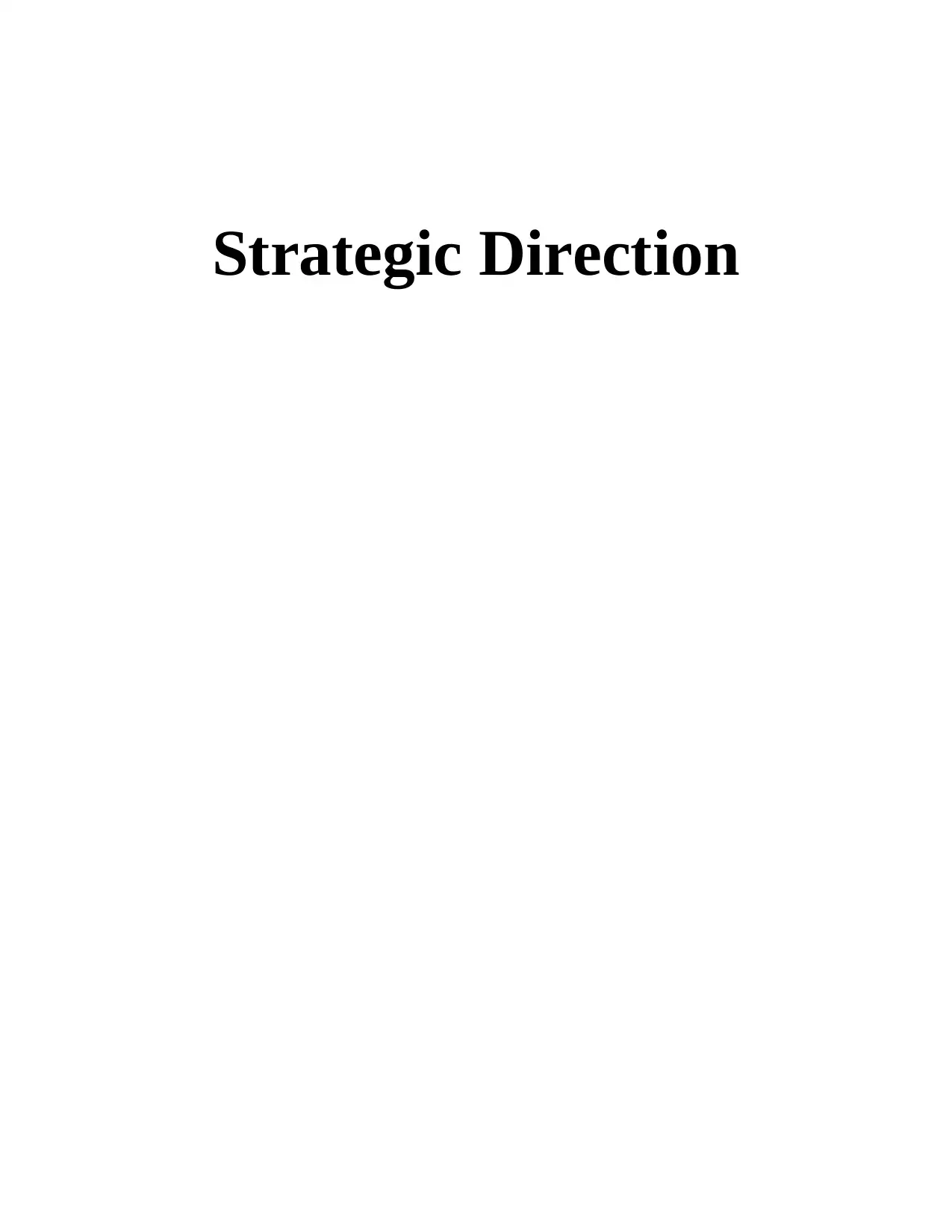
Strategic Direction
Paraphrase This Document
Need a fresh take? Get an instant paraphrase of this document with our AI Paraphraser
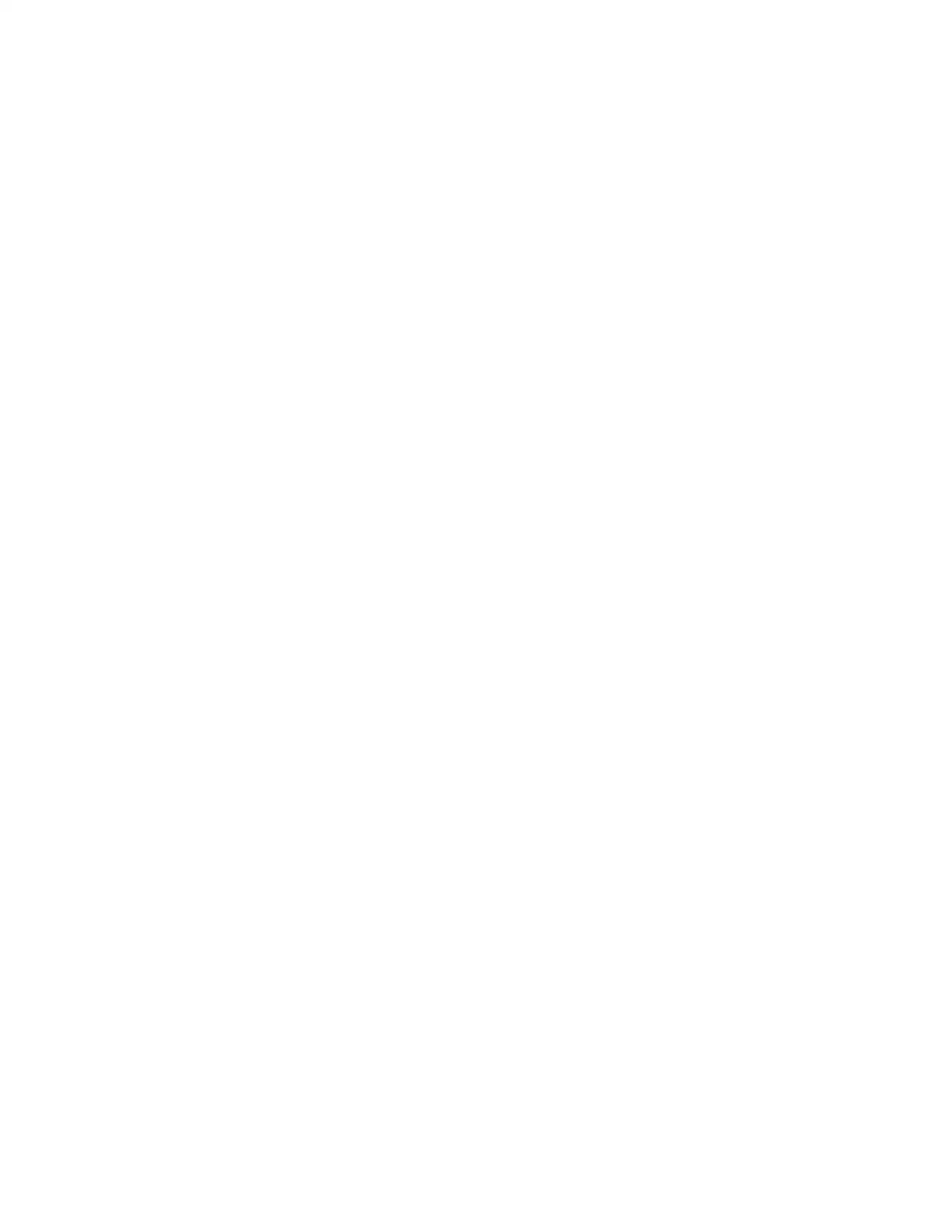
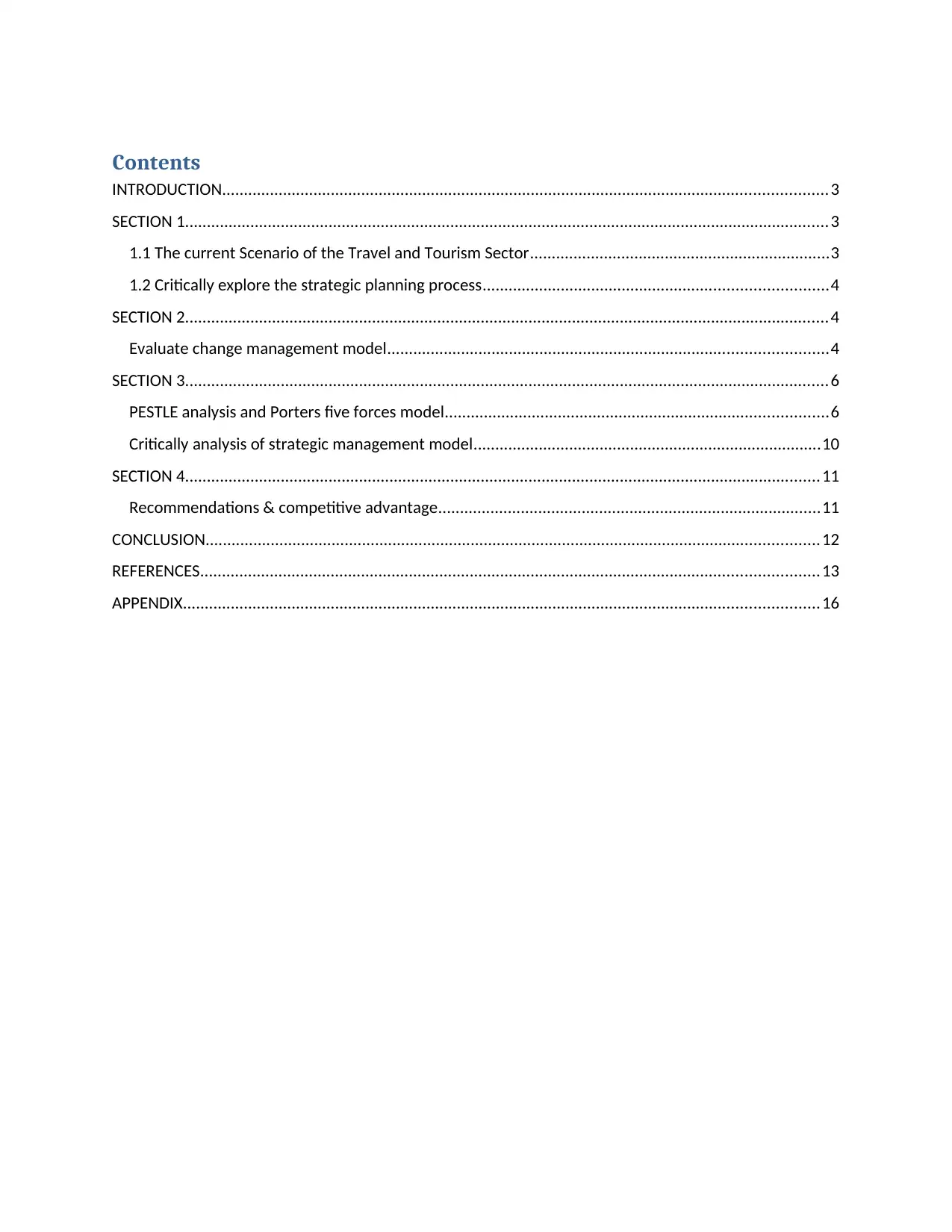
Contents
INTRODUCTION...........................................................................................................................................3
SECTION 1....................................................................................................................................................3
1.1 The current Scenario of the Travel and Tourism Sector.....................................................................3
1.2 Critically explore the strategic planning process...............................................................................4
SECTION 2....................................................................................................................................................4
Evaluate change management model.....................................................................................................4
SECTION 3....................................................................................................................................................6
PESTLE analysis and Porters five forces model........................................................................................6
Critically analysis of strategic management model................................................................................10
SECTION 4..................................................................................................................................................11
Recommendations & competitive advantage........................................................................................11
CONCLUSION.............................................................................................................................................12
REFERENCES..............................................................................................................................................13
APPENDIX..................................................................................................................................................16
INTRODUCTION...........................................................................................................................................3
SECTION 1....................................................................................................................................................3
1.1 The current Scenario of the Travel and Tourism Sector.....................................................................3
1.2 Critically explore the strategic planning process...............................................................................4
SECTION 2....................................................................................................................................................4
Evaluate change management model.....................................................................................................4
SECTION 3....................................................................................................................................................6
PESTLE analysis and Porters five forces model........................................................................................6
Critically analysis of strategic management model................................................................................10
SECTION 4..................................................................................................................................................11
Recommendations & competitive advantage........................................................................................11
CONCLUSION.............................................................................................................................................12
REFERENCES..............................................................................................................................................13
APPENDIX..................................................................................................................................................16
⊘ This is a preview!⊘
Do you want full access?
Subscribe today to unlock all pages.

Trusted by 1+ million students worldwide
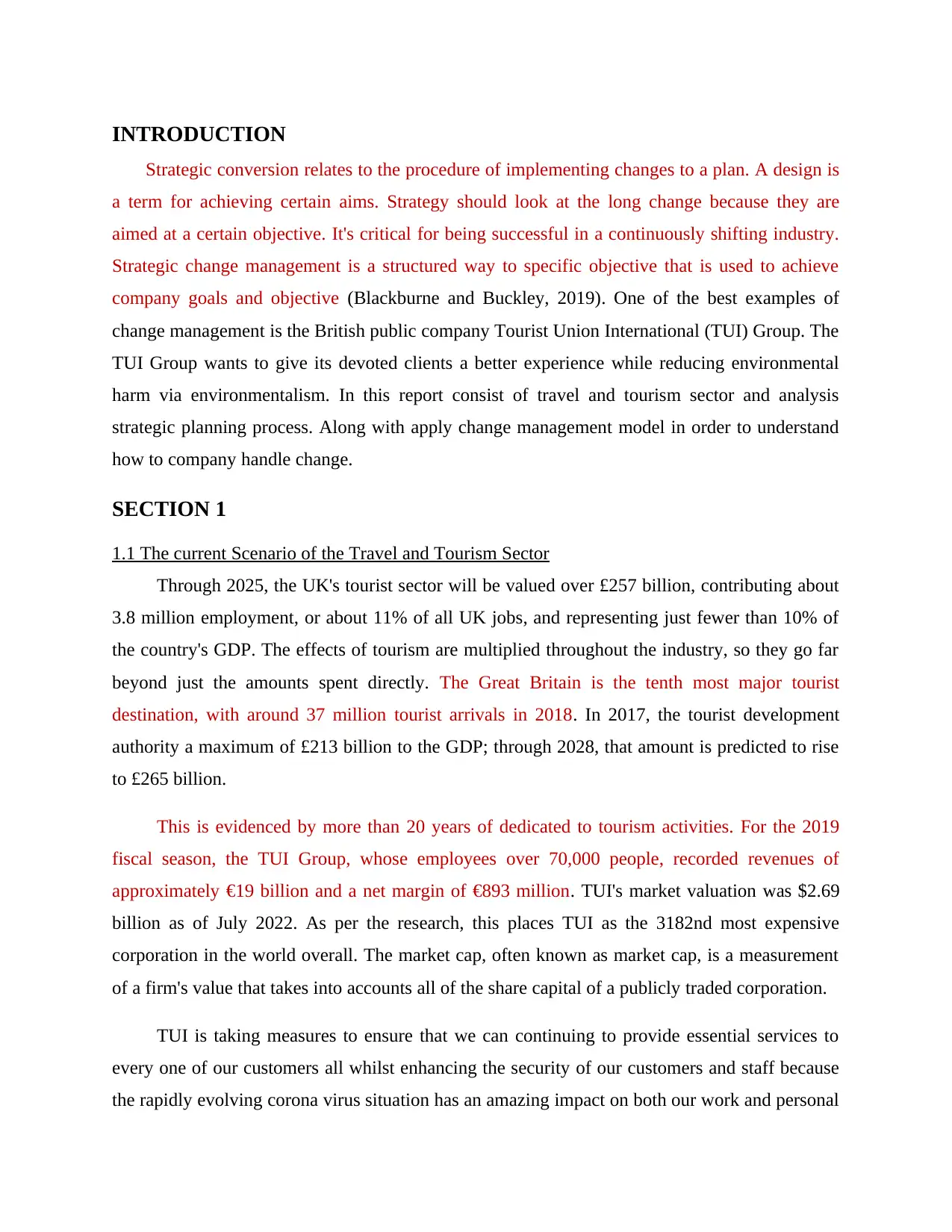
INTRODUCTION
Strategic conversion relates to the procedure of implementing changes to a plan. A design is
a term for achieving certain aims. Strategy should look at the long change because they are
aimed at a certain objective. It's critical for being successful in a continuously shifting industry.
Strategic change management is a structured way to specific objective that is used to achieve
company goals and objective (Blackburne and Buckley, 2019). One of the best examples of
change management is the British public company Tourist Union International (TUI) Group. The
TUI Group wants to give its devoted clients a better experience while reducing environmental
harm via environmentalism. In this report consist of travel and tourism sector and analysis
strategic planning process. Along with apply change management model in order to understand
how to company handle change.
SECTION 1
1.1 The current Scenario of the Travel and Tourism Sector
Through 2025, the UK's tourist sector will be valued over £257 billion, contributing about
3.8 million employment, or about 11% of all UK jobs, and representing just fewer than 10% of
the country's GDP. The effects of tourism are multiplied throughout the industry, so they go far
beyond just the amounts spent directly. The Great Britain is the tenth most major tourist
destination, with around 37 million tourist arrivals in 2018. In 2017, the tourist development
authority a maximum of £213 billion to the GDP; through 2028, that amount is predicted to rise
to £265 billion.
This is evidenced by more than 20 years of dedicated to tourism activities. For the 2019
fiscal season, the TUI Group, whose employees over 70,000 people, recorded revenues of
approximately €19 billion and a net margin of €893 million. TUI's market valuation was $2.69
billion as of July 2022. As per the research, this places TUI as the 3182nd most expensive
corporation in the world overall. The market cap, often known as market cap, is a measurement
of a firm's value that takes into accounts all of the share capital of a publicly traded corporation.
TUI is taking measures to ensure that we can continuing to provide essential services to
every one of our customers all whilst enhancing the security of our customers and staff because
the rapidly evolving corona virus situation has an amazing impact on both our work and personal
Strategic conversion relates to the procedure of implementing changes to a plan. A design is
a term for achieving certain aims. Strategy should look at the long change because they are
aimed at a certain objective. It's critical for being successful in a continuously shifting industry.
Strategic change management is a structured way to specific objective that is used to achieve
company goals and objective (Blackburne and Buckley, 2019). One of the best examples of
change management is the British public company Tourist Union International (TUI) Group. The
TUI Group wants to give its devoted clients a better experience while reducing environmental
harm via environmentalism. In this report consist of travel and tourism sector and analysis
strategic planning process. Along with apply change management model in order to understand
how to company handle change.
SECTION 1
1.1 The current Scenario of the Travel and Tourism Sector
Through 2025, the UK's tourist sector will be valued over £257 billion, contributing about
3.8 million employment, or about 11% of all UK jobs, and representing just fewer than 10% of
the country's GDP. The effects of tourism are multiplied throughout the industry, so they go far
beyond just the amounts spent directly. The Great Britain is the tenth most major tourist
destination, with around 37 million tourist arrivals in 2018. In 2017, the tourist development
authority a maximum of £213 billion to the GDP; through 2028, that amount is predicted to rise
to £265 billion.
This is evidenced by more than 20 years of dedicated to tourism activities. For the 2019
fiscal season, the TUI Group, whose employees over 70,000 people, recorded revenues of
approximately €19 billion and a net margin of €893 million. TUI's market valuation was $2.69
billion as of July 2022. As per the research, this places TUI as the 3182nd most expensive
corporation in the world overall. The market cap, often known as market cap, is a measurement
of a firm's value that takes into accounts all of the share capital of a publicly traded corporation.
TUI is taking measures to ensure that we can continuing to provide essential services to
every one of our customers all whilst enhancing the security of our customers and staff because
the rapidly evolving corona virus situation has an amazing impact on both our work and personal
Paraphrase This Document
Need a fresh take? Get an instant paraphrase of this document with our AI Paraphraser
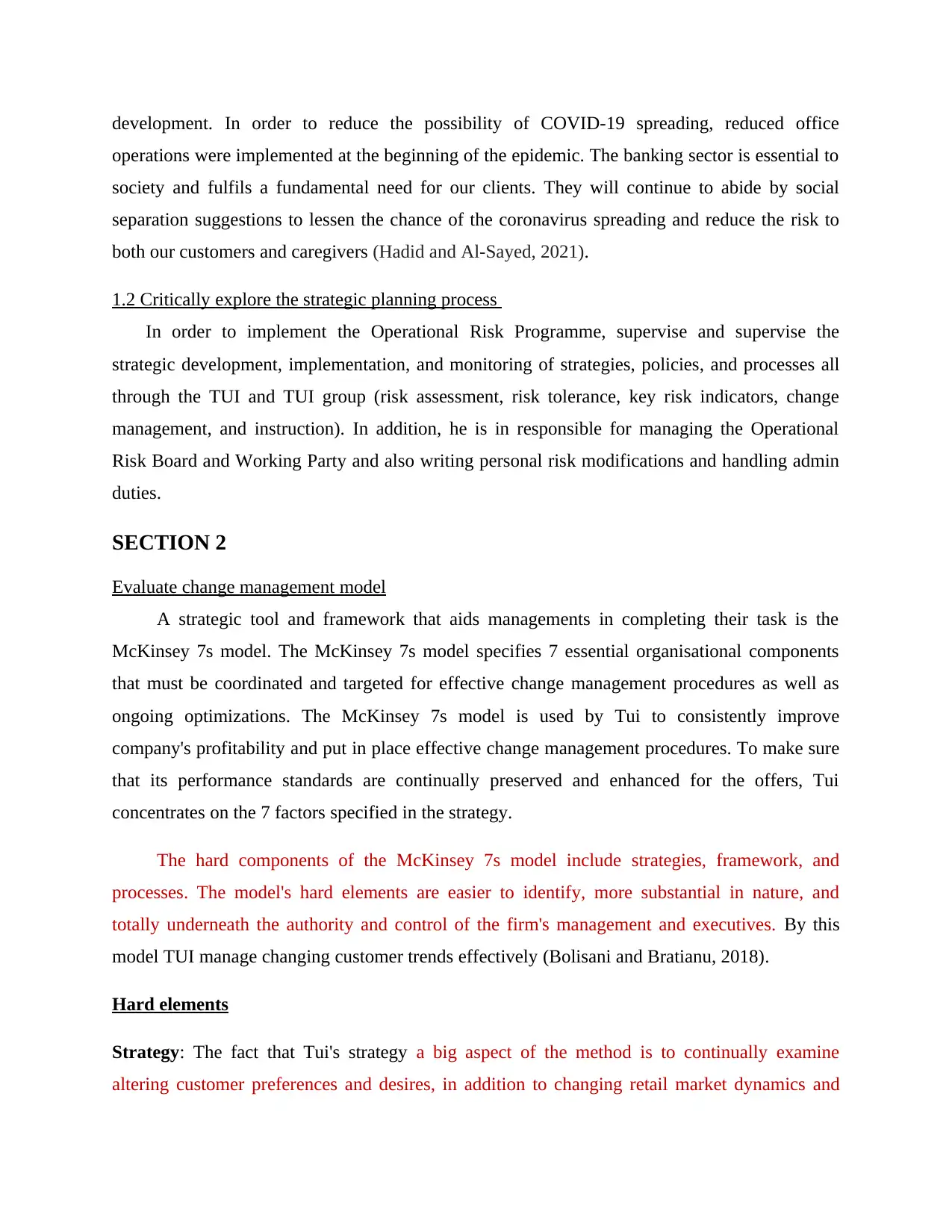
development. In order to reduce the possibility of COVID-19 spreading, reduced office
operations were implemented at the beginning of the epidemic. The banking sector is essential to
society and fulfils a fundamental need for our clients. They will continue to abide by social
separation suggestions to lessen the chance of the coronavirus spreading and reduce the risk to
both our customers and caregivers (Hadid and Al-Sayed, 2021).
1.2 Critically explore the strategic planning process
In order to implement the Operational Risk Programme, supervise and supervise the
strategic development, implementation, and monitoring of strategies, policies, and processes all
through the TUI and TUI group (risk assessment, risk tolerance, key risk indicators, change
management, and instruction). In addition, he is in responsible for managing the Operational
Risk Board and Working Party and also writing personal risk modifications and handling admin
duties.
SECTION 2
Evaluate change management model
A strategic tool and framework that aids managements in completing their task is the
McKinsey 7s model. The McKinsey 7s model specifies 7 essential organisational components
that must be coordinated and targeted for effective change management procedures as well as
ongoing optimizations. The McKinsey 7s model is used by Tui to consistently improve
company's profitability and put in place effective change management procedures. To make sure
that its performance standards are continually preserved and enhanced for the offers, Tui
concentrates on the 7 factors specified in the strategy.
The hard components of the McKinsey 7s model include strategies, framework, and
processes. The model's hard elements are easier to identify, more substantial in nature, and
totally underneath the authority and control of the firm's management and executives. By this
model TUI manage changing customer trends effectively (Bolisani and Bratianu, 2018).
Hard elements
Strategy: The fact that Tui's strategy a big aspect of the method is to continually examine
altering customer preferences and desires, in addition to changing retail market dynamics and
operations were implemented at the beginning of the epidemic. The banking sector is essential to
society and fulfils a fundamental need for our clients. They will continue to abide by social
separation suggestions to lessen the chance of the coronavirus spreading and reduce the risk to
both our customers and caregivers (Hadid and Al-Sayed, 2021).
1.2 Critically explore the strategic planning process
In order to implement the Operational Risk Programme, supervise and supervise the
strategic development, implementation, and monitoring of strategies, policies, and processes all
through the TUI and TUI group (risk assessment, risk tolerance, key risk indicators, change
management, and instruction). In addition, he is in responsible for managing the Operational
Risk Board and Working Party and also writing personal risk modifications and handling admin
duties.
SECTION 2
Evaluate change management model
A strategic tool and framework that aids managements in completing their task is the
McKinsey 7s model. The McKinsey 7s model specifies 7 essential organisational components
that must be coordinated and targeted for effective change management procedures as well as
ongoing optimizations. The McKinsey 7s model is used by Tui to consistently improve
company's profitability and put in place effective change management procedures. To make sure
that its performance standards are continually preserved and enhanced for the offers, Tui
concentrates on the 7 factors specified in the strategy.
The hard components of the McKinsey 7s model include strategies, framework, and
processes. The model's hard elements are easier to identify, more substantial in nature, and
totally underneath the authority and control of the firm's management and executives. By this
model TUI manage changing customer trends effectively (Bolisani and Bratianu, 2018).
Hard elements
Strategy: The fact that Tui's strategy a big aspect of the method is to continually examine
altering customer preferences and desires, in addition to changing retail market dynamics and
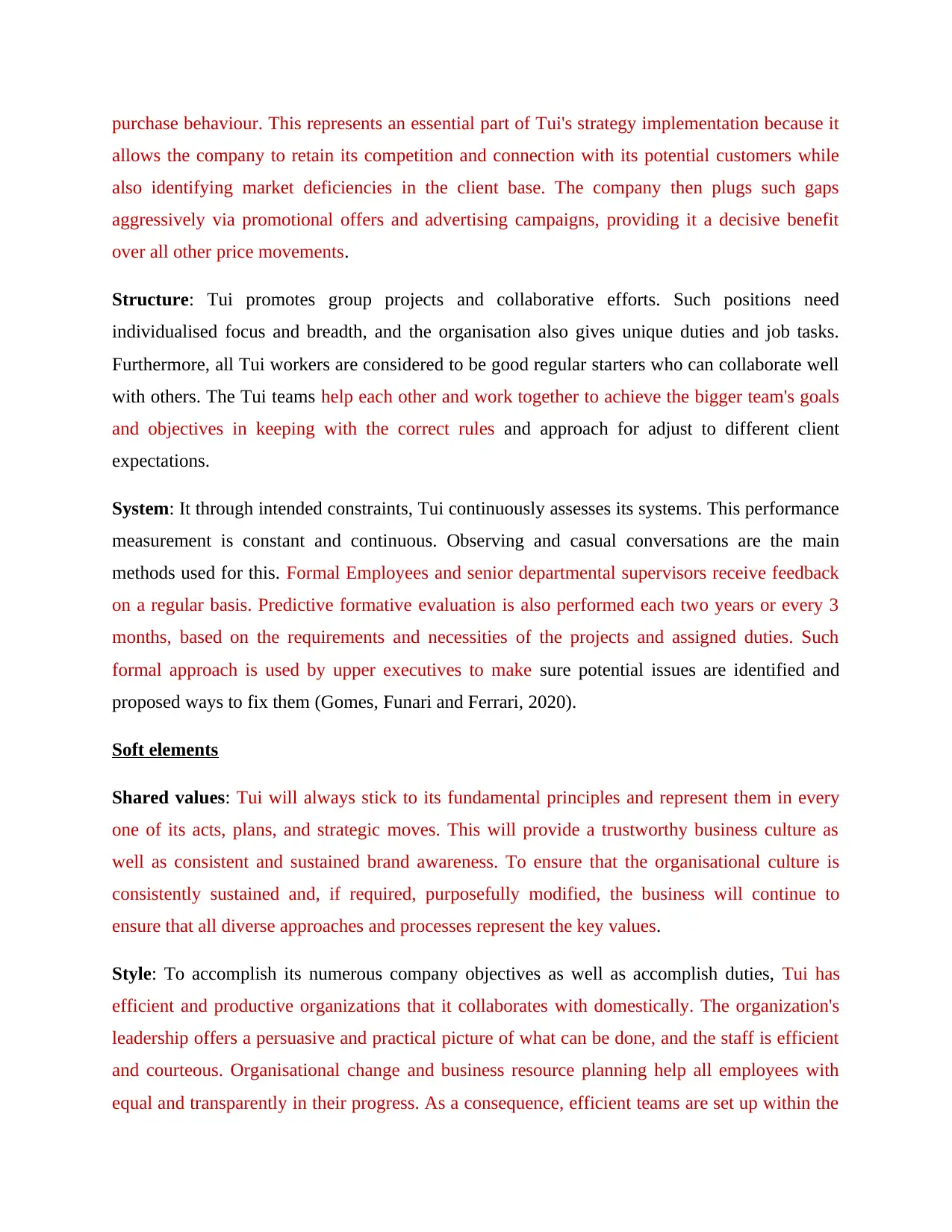
purchase behaviour. This represents an essential part of Tui's strategy implementation because it
allows the company to retain its competition and connection with its potential customers while
also identifying market deficiencies in the client base. The company then plugs such gaps
aggressively via promotional offers and advertising campaigns, providing it a decisive benefit
over all other price movements.
Structure: Tui promotes group projects and collaborative efforts. Such positions need
individualised focus and breadth, and the organisation also gives unique duties and job tasks.
Furthermore, all Tui workers are considered to be good regular starters who can collaborate well
with others. The Tui teams help each other and work together to achieve the bigger team's goals
and objectives in keeping with the correct rules and approach for adjust to different client
expectations.
System: It through intended constraints, Tui continuously assesses its systems. This performance
measurement is constant and continuous. Observing and casual conversations are the main
methods used for this. Formal Employees and senior departmental supervisors receive feedback
on a regular basis. Predictive formative evaluation is also performed each two years or every 3
months, based on the requirements and necessities of the projects and assigned duties. Such
formal approach is used by upper executives to make sure potential issues are identified and
proposed ways to fix them (Gomes, Funari and Ferrari, 2020).
Soft elements
Shared values: Tui will always stick to its fundamental principles and represent them in every
one of its acts, plans, and strategic moves. This will provide a trustworthy business culture as
well as consistent and sustained brand awareness. To ensure that the organisational culture is
consistently sustained and, if required, purposefully modified, the business will continue to
ensure that all diverse approaches and processes represent the key values.
Style: To accomplish its numerous company objectives as well as accomplish duties, Tui has
efficient and productive organizations that it collaborates with domestically. The organization's
leadership offers a persuasive and practical picture of what can be done, and the staff is efficient
and courteous. Organisational change and business resource planning help all employees with
equal and transparently in their progress. As a consequence, efficient teams are set up within the
allows the company to retain its competition and connection with its potential customers while
also identifying market deficiencies in the client base. The company then plugs such gaps
aggressively via promotional offers and advertising campaigns, providing it a decisive benefit
over all other price movements.
Structure: Tui promotes group projects and collaborative efforts. Such positions need
individualised focus and breadth, and the organisation also gives unique duties and job tasks.
Furthermore, all Tui workers are considered to be good regular starters who can collaborate well
with others. The Tui teams help each other and work together to achieve the bigger team's goals
and objectives in keeping with the correct rules and approach for adjust to different client
expectations.
System: It through intended constraints, Tui continuously assesses its systems. This performance
measurement is constant and continuous. Observing and casual conversations are the main
methods used for this. Formal Employees and senior departmental supervisors receive feedback
on a regular basis. Predictive formative evaluation is also performed each two years or every 3
months, based on the requirements and necessities of the projects and assigned duties. Such
formal approach is used by upper executives to make sure potential issues are identified and
proposed ways to fix them (Gomes, Funari and Ferrari, 2020).
Soft elements
Shared values: Tui will always stick to its fundamental principles and represent them in every
one of its acts, plans, and strategic moves. This will provide a trustworthy business culture as
well as consistent and sustained brand awareness. To ensure that the organisational culture is
consistently sustained and, if required, purposefully modified, the business will continue to
ensure that all diverse approaches and processes represent the key values.
Style: To accomplish its numerous company objectives as well as accomplish duties, Tui has
efficient and productive organizations that it collaborates with domestically. The organization's
leadership offers a persuasive and practical picture of what can be done, and the staff is efficient
and courteous. Organisational change and business resource planning help all employees with
equal and transparently in their progress. As a consequence, efficient teams are set up within the
⊘ This is a preview!⊘
Do you want full access?
Subscribe today to unlock all pages.

Trusted by 1+ million students worldwide
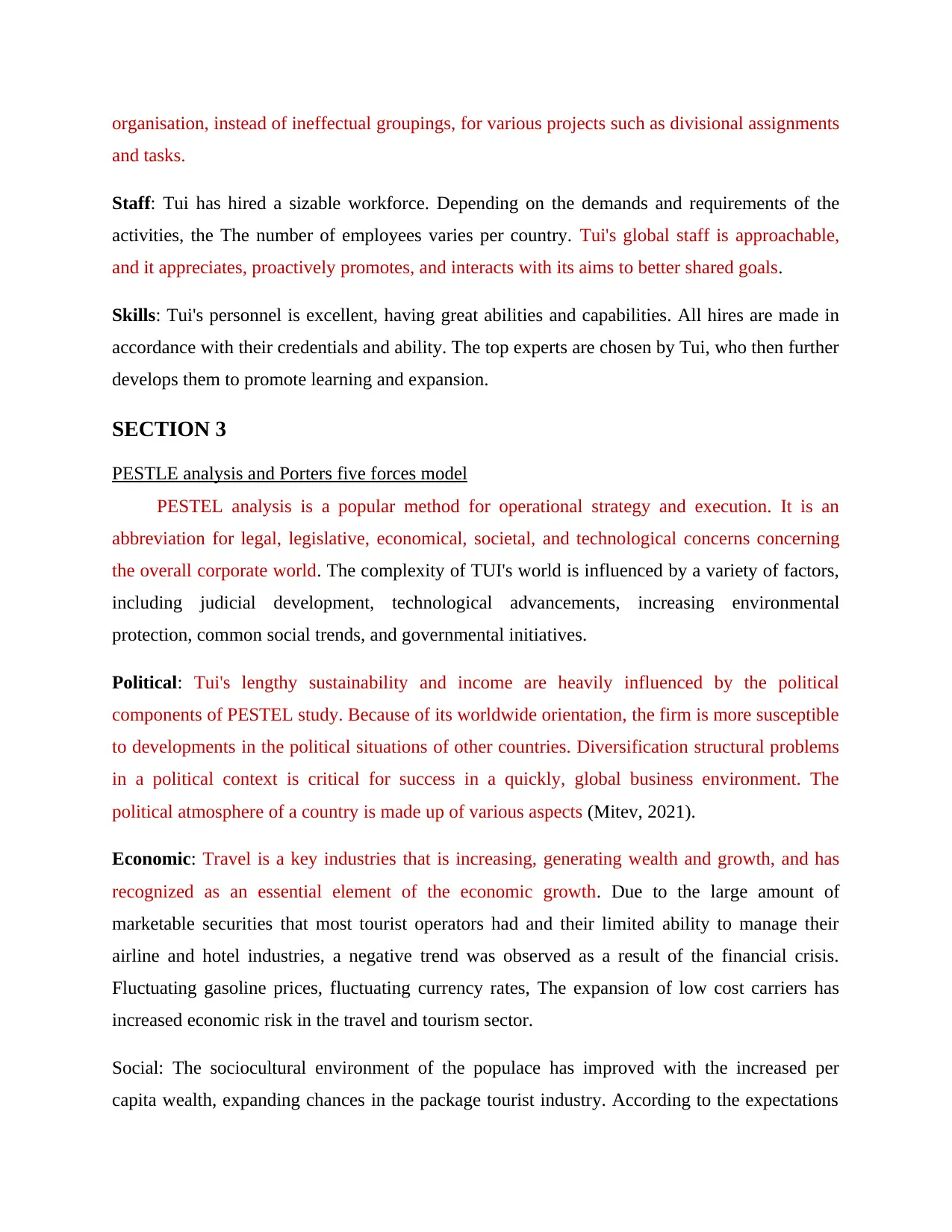
organisation, instead of ineffectual groupings, for various projects such as divisional assignments
and tasks.
Staff: Tui has hired a sizable workforce. Depending on the demands and requirements of the
activities, the The number of employees varies per country. Tui's global staff is approachable,
and it appreciates, proactively promotes, and interacts with its aims to better shared goals.
Skills: Tui's personnel is excellent, having great abilities and capabilities. All hires are made in
accordance with their credentials and ability. The top experts are chosen by Tui, who then further
develops them to promote learning and expansion.
SECTION 3
PESTLE analysis and Porters five forces model
PESTEL analysis is a popular method for operational strategy and execution. It is an
abbreviation for legal, legislative, economical, societal, and technological concerns concerning
the overall corporate world. The complexity of TUI's world is influenced by a variety of factors,
including judicial development, technological advancements, increasing environmental
protection, common social trends, and governmental initiatives.
Political: Tui's lengthy sustainability and income are heavily influenced by the political
components of PESTEL study. Because of its worldwide orientation, the firm is more susceptible
to developments in the political situations of other countries. Diversification structural problems
in a political context is critical for success in a quickly, global business environment. The
political atmosphere of a country is made up of various aspects (Mitev, 2021).
Economic: Travel is a key industries that is increasing, generating wealth and growth, and has
recognized as an essential element of the economic growth. Due to the large amount of
marketable securities that most tourist operators had and their limited ability to manage their
airline and hotel industries, a negative trend was observed as a result of the financial crisis.
Fluctuating gasoline prices, fluctuating currency rates, The expansion of low cost carriers has
increased economic risk in the travel and tourism sector.
Social: The sociocultural environment of the populace has improved with the increased per
capita wealth, expanding chances in the package tourist industry. According to the expectations
and tasks.
Staff: Tui has hired a sizable workforce. Depending on the demands and requirements of the
activities, the The number of employees varies per country. Tui's global staff is approachable,
and it appreciates, proactively promotes, and interacts with its aims to better shared goals.
Skills: Tui's personnel is excellent, having great abilities and capabilities. All hires are made in
accordance with their credentials and ability. The top experts are chosen by Tui, who then further
develops them to promote learning and expansion.
SECTION 3
PESTLE analysis and Porters five forces model
PESTEL analysis is a popular method for operational strategy and execution. It is an
abbreviation for legal, legislative, economical, societal, and technological concerns concerning
the overall corporate world. The complexity of TUI's world is influenced by a variety of factors,
including judicial development, technological advancements, increasing environmental
protection, common social trends, and governmental initiatives.
Political: Tui's lengthy sustainability and income are heavily influenced by the political
components of PESTEL study. Because of its worldwide orientation, the firm is more susceptible
to developments in the political situations of other countries. Diversification structural problems
in a political context is critical for success in a quickly, global business environment. The
political atmosphere of a country is made up of various aspects (Mitev, 2021).
Economic: Travel is a key industries that is increasing, generating wealth and growth, and has
recognized as an essential element of the economic growth. Due to the large amount of
marketable securities that most tourist operators had and their limited ability to manage their
airline and hotel industries, a negative trend was observed as a result of the financial crisis.
Fluctuating gasoline prices, fluctuating currency rates, The expansion of low cost carriers has
increased economic risk in the travel and tourism sector.
Social: The sociocultural environment of the populace has improved with the increased per
capita wealth, expanding chances in the package tourist industry. According to the expectations
Paraphrase This Document
Need a fresh take? Get an instant paraphrase of this document with our AI Paraphraser
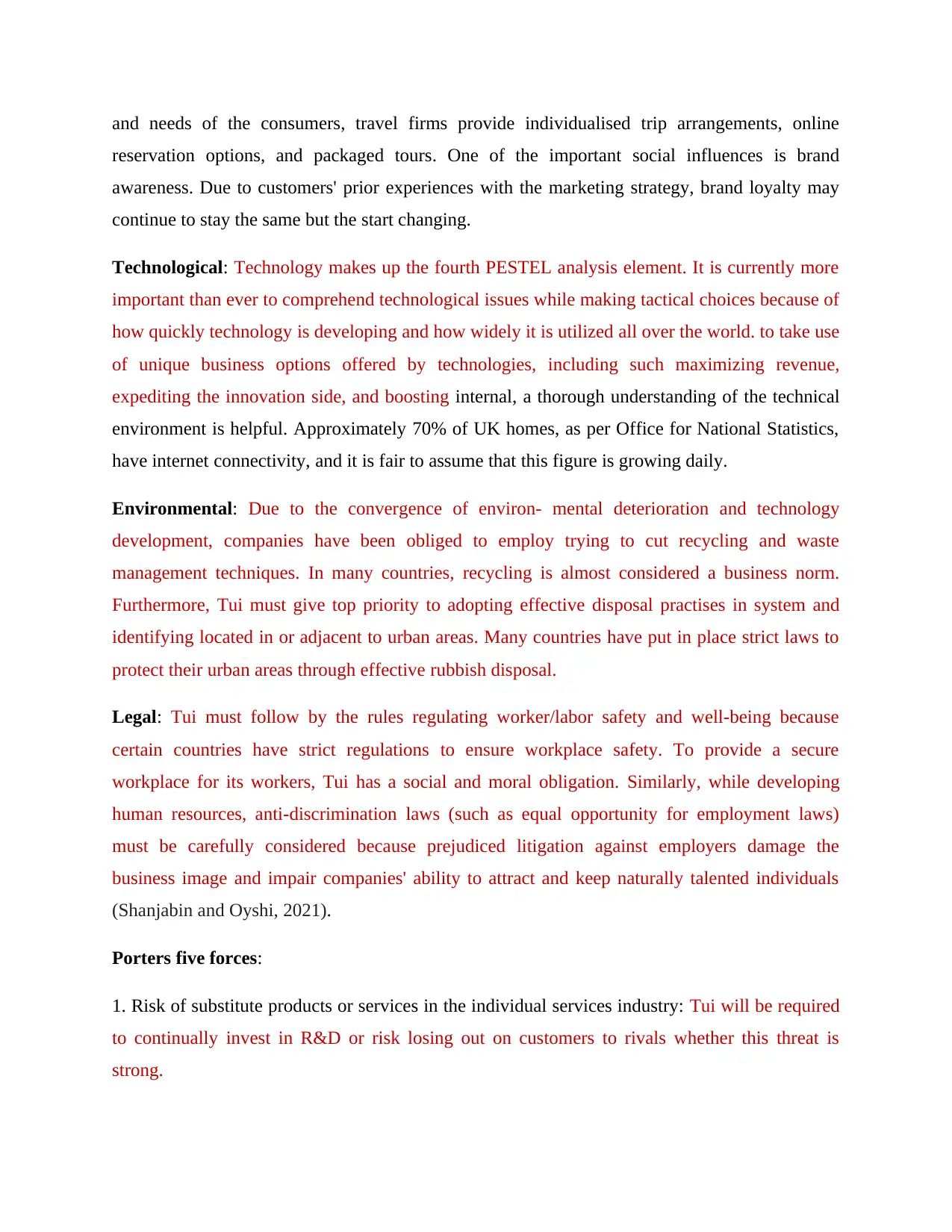
and needs of the consumers, travel firms provide individualised trip arrangements, online
reservation options, and packaged tours. One of the important social influences is brand
awareness. Due to customers' prior experiences with the marketing strategy, brand loyalty may
continue to stay the same but the start changing.
Technological: Technology makes up the fourth PESTEL analysis element. It is currently more
important than ever to comprehend technological issues while making tactical choices because of
how quickly technology is developing and how widely it is utilized all over the world. to take use
of unique business options offered by technologies, including such maximizing revenue,
expediting the innovation side, and boosting internal, a thorough understanding of the technical
environment is helpful. Approximately 70% of UK homes, as per Office for National Statistics,
have internet connectivity, and it is fair to assume that this figure is growing daily.
Environmental: Due to the convergence of environ- mental deterioration and technology
development, companies have been obliged to employ trying to cut recycling and waste
management techniques. In many countries, recycling is almost considered a business norm.
Furthermore, Tui must give top priority to adopting effective disposal practises in system and
identifying located in or adjacent to urban areas. Many countries have put in place strict laws to
protect their urban areas through effective rubbish disposal.
Legal: Tui must follow by the rules regulating worker/labor safety and well-being because
certain countries have strict regulations to ensure workplace safety. To provide a secure
workplace for its workers, Tui has a social and moral obligation. Similarly, while developing
human resources, anti-discrimination laws (such as equal opportunity for employment laws)
must be carefully considered because prejudiced litigation against employers damage the
business image and impair companies' ability to attract and keep naturally talented individuals
(Shanjabin and Oyshi, 2021).
Porters five forces:
1. Risk of substitute products or services in the individual services industry: Tui will be required
to continually invest in R&D or risk losing out on customers to rivals whether this threat is
strong.
reservation options, and packaged tours. One of the important social influences is brand
awareness. Due to customers' prior experiences with the marketing strategy, brand loyalty may
continue to stay the same but the start changing.
Technological: Technology makes up the fourth PESTEL analysis element. It is currently more
important than ever to comprehend technological issues while making tactical choices because of
how quickly technology is developing and how widely it is utilized all over the world. to take use
of unique business options offered by technologies, including such maximizing revenue,
expediting the innovation side, and boosting internal, a thorough understanding of the technical
environment is helpful. Approximately 70% of UK homes, as per Office for National Statistics,
have internet connectivity, and it is fair to assume that this figure is growing daily.
Environmental: Due to the convergence of environ- mental deterioration and technology
development, companies have been obliged to employ trying to cut recycling and waste
management techniques. In many countries, recycling is almost considered a business norm.
Furthermore, Tui must give top priority to adopting effective disposal practises in system and
identifying located in or adjacent to urban areas. Many countries have put in place strict laws to
protect their urban areas through effective rubbish disposal.
Legal: Tui must follow by the rules regulating worker/labor safety and well-being because
certain countries have strict regulations to ensure workplace safety. To provide a secure
workplace for its workers, Tui has a social and moral obligation. Similarly, while developing
human resources, anti-discrimination laws (such as equal opportunity for employment laws)
must be carefully considered because prejudiced litigation against employers damage the
business image and impair companies' ability to attract and keep naturally talented individuals
(Shanjabin and Oyshi, 2021).
Porters five forces:
1. Risk of substitute products or services in the individual services industry: Tui will be required
to continually invest in R&D or risk losing out on customers to rivals whether this threat is
strong.
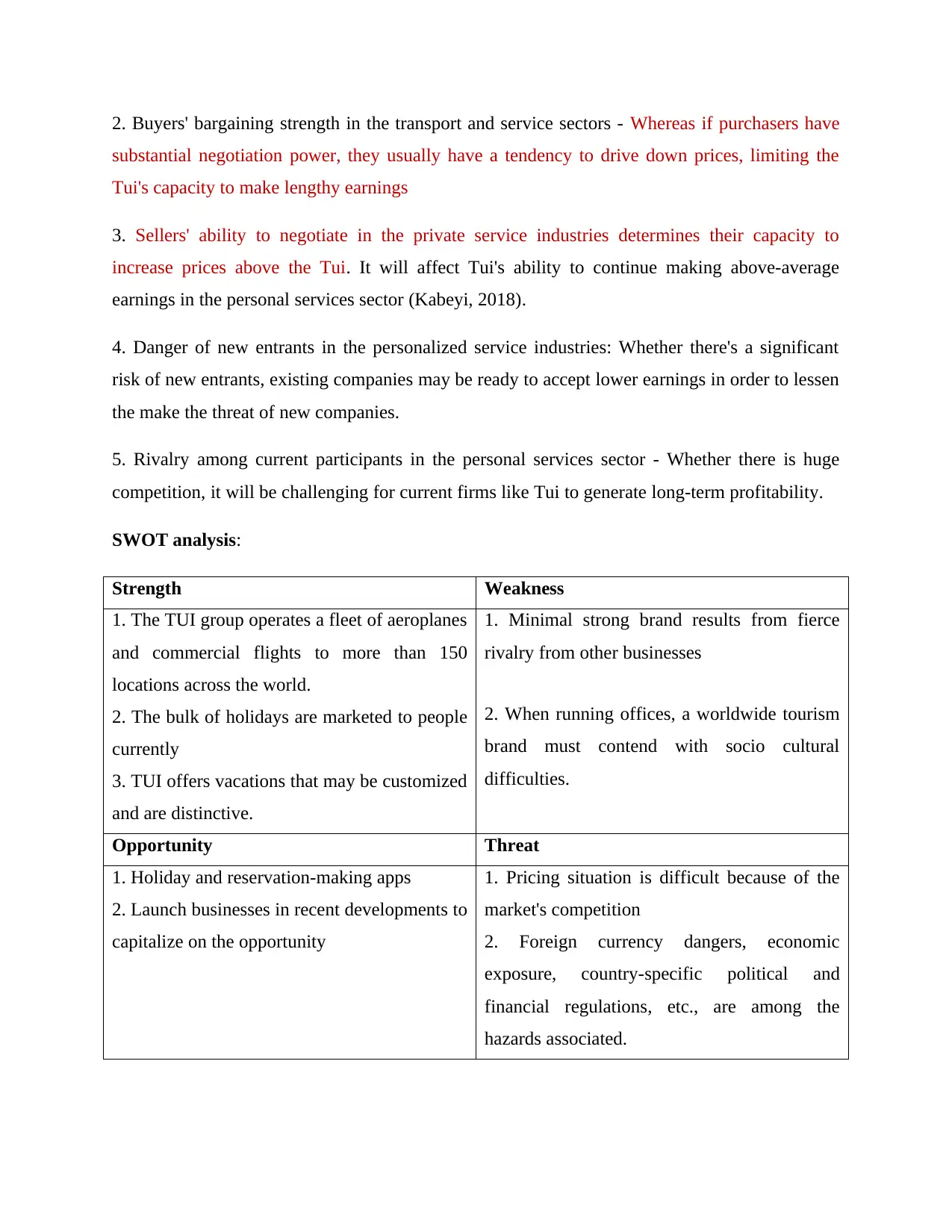
2. Buyers' bargaining strength in the transport and service sectors - Whereas if purchasers have
substantial negotiation power, they usually have a tendency to drive down prices, limiting the
Tui's capacity to make lengthy earnings
3. Sellers' ability to negotiate in the private service industries determines their capacity to
increase prices above the Tui. It will affect Tui's ability to continue making above-average
earnings in the personal services sector (Kabeyi, 2018).
4. Danger of new entrants in the personalized service industries: Whether there's a significant
risk of new entrants, existing companies may be ready to accept lower earnings in order to lessen
the make the threat of new companies.
5. Rivalry among current participants in the personal services sector - Whether there is huge
competition, it will be challenging for current firms like Tui to generate long-term profitability.
SWOT analysis:
Strength Weakness
1. The TUI group operates a fleet of aeroplanes
and commercial flights to more than 150
locations across the world.
2. The bulk of holidays are marketed to people
currently
3. TUI offers vacations that may be customized
and are distinctive.
1. Minimal strong brand results from fierce
rivalry from other businesses
2. When running offices, a worldwide tourism
brand must contend with socio cultural
difficulties.
Opportunity Threat
1. Holiday and reservation-making apps
2. Launch businesses in recent developments to
capitalize on the opportunity
1. Pricing situation is difficult because of the
market's competition
2. Foreign currency dangers, economic
exposure, country-specific political and
financial regulations, etc., are among the
hazards associated.
substantial negotiation power, they usually have a tendency to drive down prices, limiting the
Tui's capacity to make lengthy earnings
3. Sellers' ability to negotiate in the private service industries determines their capacity to
increase prices above the Tui. It will affect Tui's ability to continue making above-average
earnings in the personal services sector (Kabeyi, 2018).
4. Danger of new entrants in the personalized service industries: Whether there's a significant
risk of new entrants, existing companies may be ready to accept lower earnings in order to lessen
the make the threat of new companies.
5. Rivalry among current participants in the personal services sector - Whether there is huge
competition, it will be challenging for current firms like Tui to generate long-term profitability.
SWOT analysis:
Strength Weakness
1. The TUI group operates a fleet of aeroplanes
and commercial flights to more than 150
locations across the world.
2. The bulk of holidays are marketed to people
currently
3. TUI offers vacations that may be customized
and are distinctive.
1. Minimal strong brand results from fierce
rivalry from other businesses
2. When running offices, a worldwide tourism
brand must contend with socio cultural
difficulties.
Opportunity Threat
1. Holiday and reservation-making apps
2. Launch businesses in recent developments to
capitalize on the opportunity
1. Pricing situation is difficult because of the
market's competition
2. Foreign currency dangers, economic
exposure, country-specific political and
financial regulations, etc., are among the
hazards associated.
⊘ This is a preview!⊘
Do you want full access?
Subscribe today to unlock all pages.

Trusted by 1+ million students worldwide
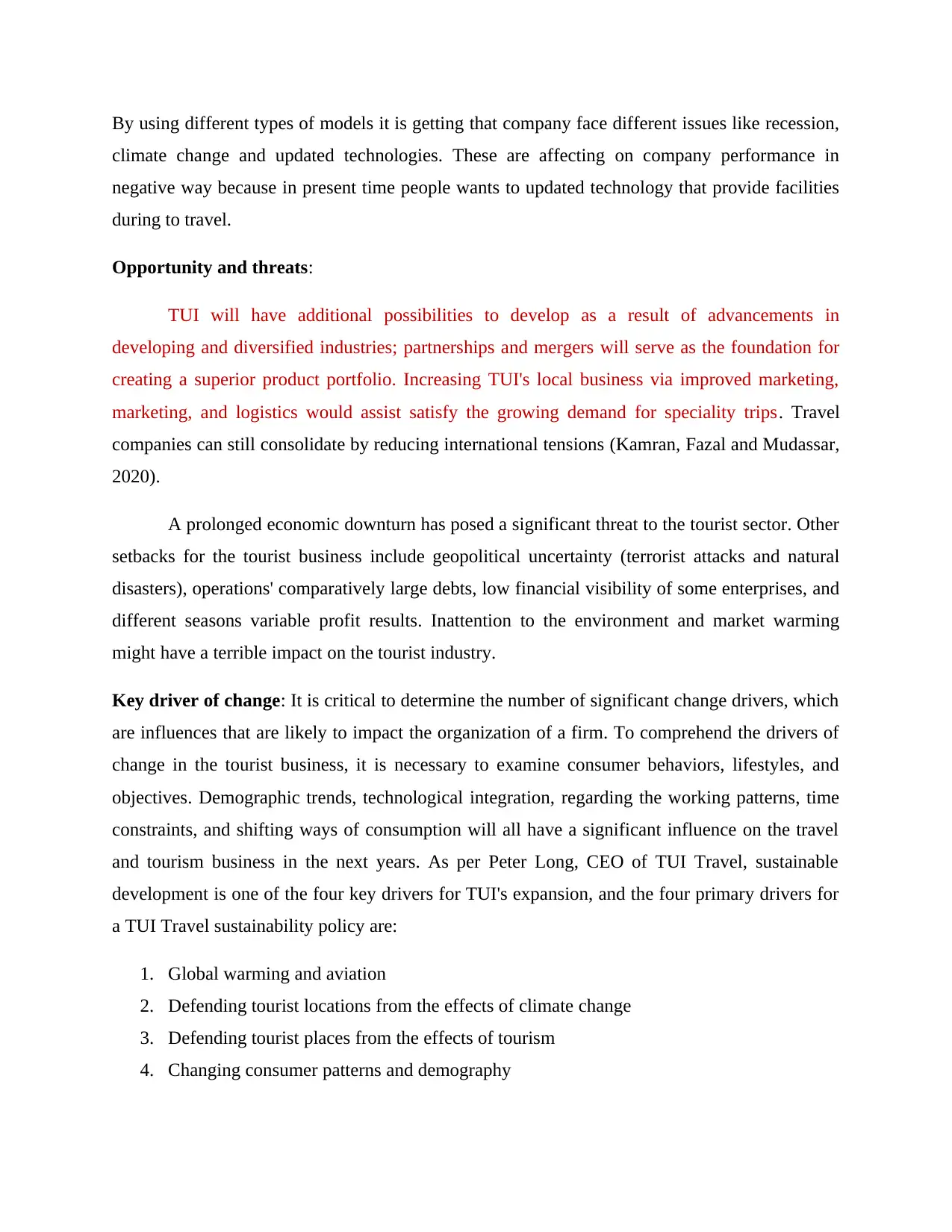
By using different types of models it is getting that company face different issues like recession,
climate change and updated technologies. These are affecting on company performance in
negative way because in present time people wants to updated technology that provide facilities
during to travel.
Opportunity and threats:
TUI will have additional possibilities to develop as a result of advancements in
developing and diversified industries; partnerships and mergers will serve as the foundation for
creating a superior product portfolio. Increasing TUI's local business via improved marketing,
marketing, and logistics would assist satisfy the growing demand for speciality trips. Travel
companies can still consolidate by reducing international tensions (Kamran, Fazal and Mudassar,
2020).
A prolonged economic downturn has posed a significant threat to the tourist sector. Other
setbacks for the tourist business include geopolitical uncertainty (terrorist attacks and natural
disasters), operations' comparatively large debts, low financial visibility of some enterprises, and
different seasons variable profit results. Inattention to the environment and market warming
might have a terrible impact on the tourist industry.
Key driver of change: It is critical to determine the number of significant change drivers, which
are influences that are likely to impact the organization of a firm. To comprehend the drivers of
change in the tourist business, it is necessary to examine consumer behaviors, lifestyles, and
objectives. Demographic trends, technological integration, regarding the working patterns, time
constraints, and shifting ways of consumption will all have a significant influence on the travel
and tourism business in the next years. As per Peter Long, CEO of TUI Travel, sustainable
development is one of the four key drivers for TUI's expansion, and the four primary drivers for
a TUI Travel sustainability policy are:
1. Global warming and aviation
2. Defending tourist locations from the effects of climate change
3. Defending tourist places from the effects of tourism
4. Changing consumer patterns and demography
climate change and updated technologies. These are affecting on company performance in
negative way because in present time people wants to updated technology that provide facilities
during to travel.
Opportunity and threats:
TUI will have additional possibilities to develop as a result of advancements in
developing and diversified industries; partnerships and mergers will serve as the foundation for
creating a superior product portfolio. Increasing TUI's local business via improved marketing,
marketing, and logistics would assist satisfy the growing demand for speciality trips. Travel
companies can still consolidate by reducing international tensions (Kamran, Fazal and Mudassar,
2020).
A prolonged economic downturn has posed a significant threat to the tourist sector. Other
setbacks for the tourist business include geopolitical uncertainty (terrorist attacks and natural
disasters), operations' comparatively large debts, low financial visibility of some enterprises, and
different seasons variable profit results. Inattention to the environment and market warming
might have a terrible impact on the tourist industry.
Key driver of change: It is critical to determine the number of significant change drivers, which
are influences that are likely to impact the organization of a firm. To comprehend the drivers of
change in the tourist business, it is necessary to examine consumer behaviors, lifestyles, and
objectives. Demographic trends, technological integration, regarding the working patterns, time
constraints, and shifting ways of consumption will all have a significant influence on the travel
and tourism business in the next years. As per Peter Long, CEO of TUI Travel, sustainable
development is one of the four key drivers for TUI's expansion, and the four primary drivers for
a TUI Travel sustainability policy are:
1. Global warming and aviation
2. Defending tourist locations from the effects of climate change
3. Defending tourist places from the effects of tourism
4. Changing consumer patterns and demography
Paraphrase This Document
Need a fresh take? Get an instant paraphrase of this document with our AI Paraphraser
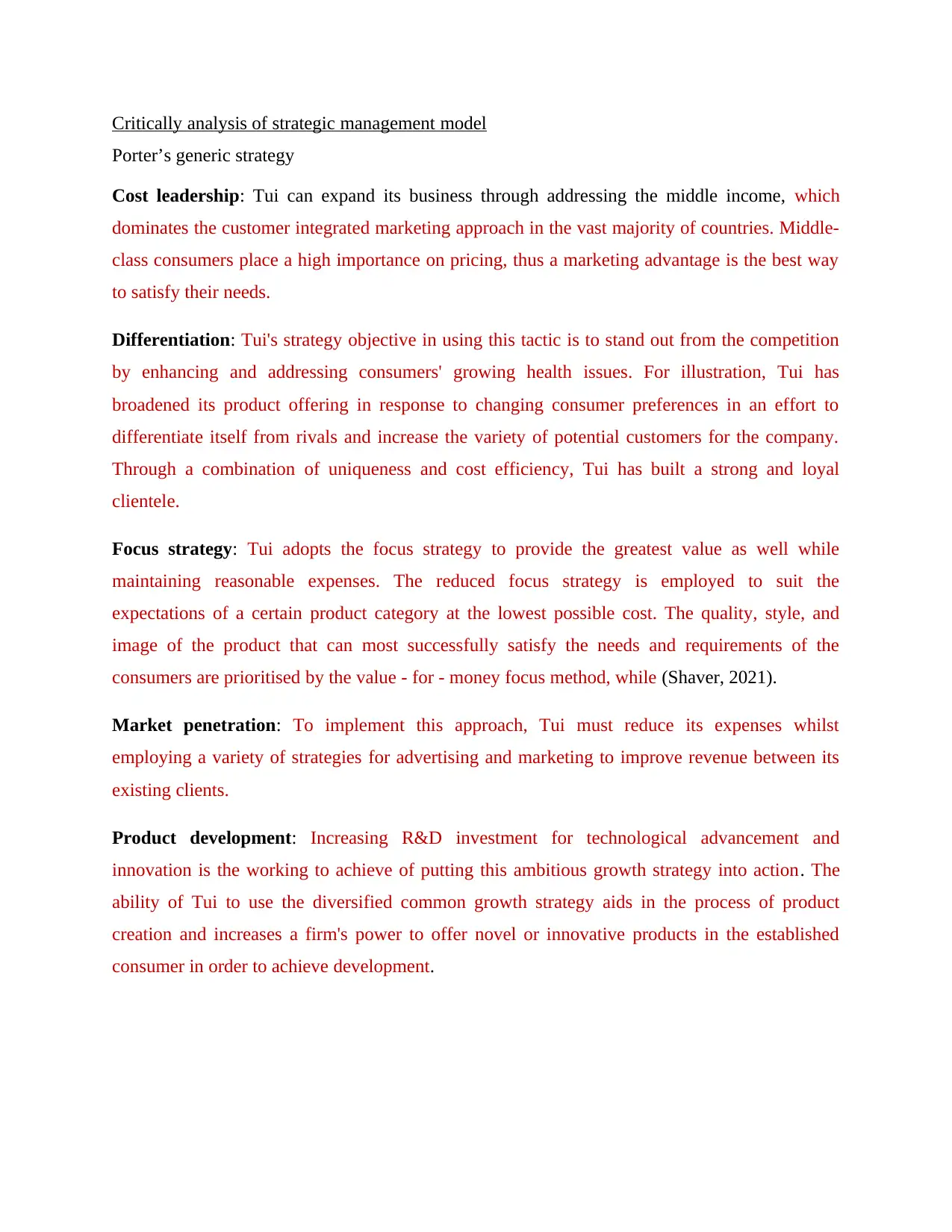
Critically analysis of strategic management model
Porter’s generic strategy
Cost leadership: Tui can expand its business through addressing the middle income, which
dominates the customer integrated marketing approach in the vast majority of countries. Middle-
class consumers place a high importance on pricing, thus a marketing advantage is the best way
to satisfy their needs.
Differentiation: Tui's strategy objective in using this tactic is to stand out from the competition
by enhancing and addressing consumers' growing health issues. For illustration, Tui has
broadened its product offering in response to changing consumer preferences in an effort to
differentiate itself from rivals and increase the variety of potential customers for the company.
Through a combination of uniqueness and cost efficiency, Tui has built a strong and loyal
clientele.
Focus strategy: Tui adopts the focus strategy to provide the greatest value as well while
maintaining reasonable expenses. The reduced focus strategy is employed to suit the
expectations of a certain product category at the lowest possible cost. The quality, style, and
image of the product that can most successfully satisfy the needs and requirements of the
consumers are prioritised by the value - for - money focus method, while (Shaver, 2021).
Market penetration: To implement this approach, Tui must reduce its expenses whilst
employing a variety of strategies for advertising and marketing to improve revenue between its
existing clients.
Product development: Increasing R&D investment for technological advancement and
innovation is the working to achieve of putting this ambitious growth strategy into action. The
ability of Tui to use the diversified common growth strategy aids in the process of product
creation and increases a firm's power to offer novel or innovative products in the established
consumer in order to achieve development.
Porter’s generic strategy
Cost leadership: Tui can expand its business through addressing the middle income, which
dominates the customer integrated marketing approach in the vast majority of countries. Middle-
class consumers place a high importance on pricing, thus a marketing advantage is the best way
to satisfy their needs.
Differentiation: Tui's strategy objective in using this tactic is to stand out from the competition
by enhancing and addressing consumers' growing health issues. For illustration, Tui has
broadened its product offering in response to changing consumer preferences in an effort to
differentiate itself from rivals and increase the variety of potential customers for the company.
Through a combination of uniqueness and cost efficiency, Tui has built a strong and loyal
clientele.
Focus strategy: Tui adopts the focus strategy to provide the greatest value as well while
maintaining reasonable expenses. The reduced focus strategy is employed to suit the
expectations of a certain product category at the lowest possible cost. The quality, style, and
image of the product that can most successfully satisfy the needs and requirements of the
consumers are prioritised by the value - for - money focus method, while (Shaver, 2021).
Market penetration: To implement this approach, Tui must reduce its expenses whilst
employing a variety of strategies for advertising and marketing to improve revenue between its
existing clients.
Product development: Increasing R&D investment for technological advancement and
innovation is the working to achieve of putting this ambitious growth strategy into action. The
ability of Tui to use the diversified common growth strategy aids in the process of product
creation and increases a firm's power to offer novel or innovative products in the established
consumer in order to achieve development.
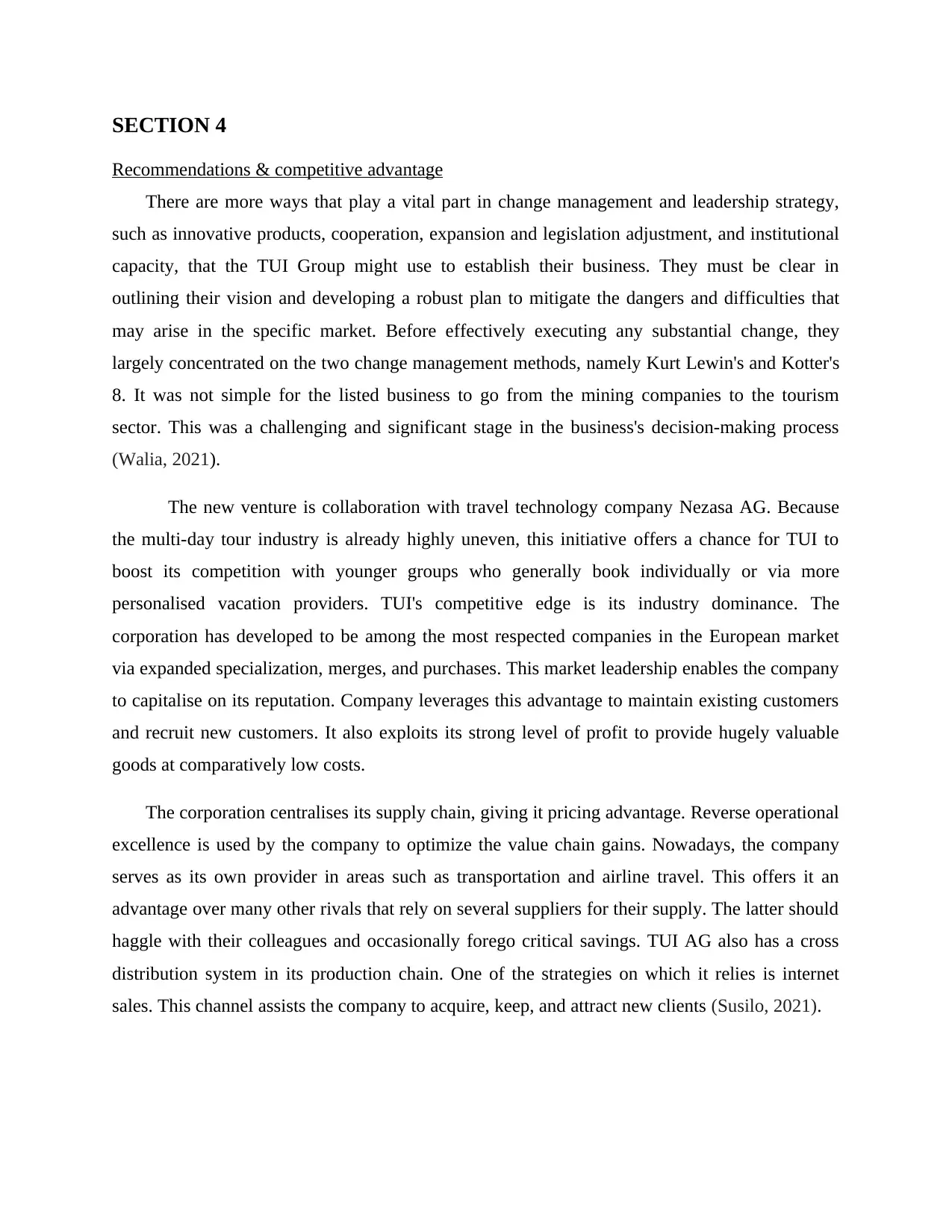
SECTION 4
Recommendations & competitive advantage
There are more ways that play a vital part in change management and leadership strategy,
such as innovative products, cooperation, expansion and legislation adjustment, and institutional
capacity, that the TUI Group might use to establish their business. They must be clear in
outlining their vision and developing a robust plan to mitigate the dangers and difficulties that
may arise in the specific market. Before effectively executing any substantial change, they
largely concentrated on the two change management methods, namely Kurt Lewin's and Kotter's
8. It was not simple for the listed business to go from the mining companies to the tourism
sector. This was a challenging and significant stage in the business's decision-making process
(Walia, 2021).
The new venture is collaboration with travel technology company Nezasa AG. Because
the multi-day tour industry is already highly uneven, this initiative offers a chance for TUI to
boost its competition with younger groups who generally book individually or via more
personalised vacation providers. TUI's competitive edge is its industry dominance. The
corporation has developed to be among the most respected companies in the European market
via expanded specialization, merges, and purchases. This market leadership enables the company
to capitalise on its reputation. Company leverages this advantage to maintain existing customers
and recruit new customers. It also exploits its strong level of profit to provide hugely valuable
goods at comparatively low costs.
The corporation centralises its supply chain, giving it pricing advantage. Reverse operational
excellence is used by the company to optimize the value chain gains. Nowadays, the company
serves as its own provider in areas such as transportation and airline travel. This offers it an
advantage over many other rivals that rely on several suppliers for their supply. The latter should
haggle with their colleagues and occasionally forego critical savings. TUI AG also has a cross
distribution system in its production chain. One of the strategies on which it relies is internet
sales. This channel assists the company to acquire, keep, and attract new clients (Susilo, 2021).
Recommendations & competitive advantage
There are more ways that play a vital part in change management and leadership strategy,
such as innovative products, cooperation, expansion and legislation adjustment, and institutional
capacity, that the TUI Group might use to establish their business. They must be clear in
outlining their vision and developing a robust plan to mitigate the dangers and difficulties that
may arise in the specific market. Before effectively executing any substantial change, they
largely concentrated on the two change management methods, namely Kurt Lewin's and Kotter's
8. It was not simple for the listed business to go from the mining companies to the tourism
sector. This was a challenging and significant stage in the business's decision-making process
(Walia, 2021).
The new venture is collaboration with travel technology company Nezasa AG. Because
the multi-day tour industry is already highly uneven, this initiative offers a chance for TUI to
boost its competition with younger groups who generally book individually or via more
personalised vacation providers. TUI's competitive edge is its industry dominance. The
corporation has developed to be among the most respected companies in the European market
via expanded specialization, merges, and purchases. This market leadership enables the company
to capitalise on its reputation. Company leverages this advantage to maintain existing customers
and recruit new customers. It also exploits its strong level of profit to provide hugely valuable
goods at comparatively low costs.
The corporation centralises its supply chain, giving it pricing advantage. Reverse operational
excellence is used by the company to optimize the value chain gains. Nowadays, the company
serves as its own provider in areas such as transportation and airline travel. This offers it an
advantage over many other rivals that rely on several suppliers for their supply. The latter should
haggle with their colleagues and occasionally forego critical savings. TUI AG also has a cross
distribution system in its production chain. One of the strategies on which it relies is internet
sales. This channel assists the company to acquire, keep, and attract new clients (Susilo, 2021).
⊘ This is a preview!⊘
Do you want full access?
Subscribe today to unlock all pages.

Trusted by 1+ million students worldwide
1 out of 17
Related Documents
Your All-in-One AI-Powered Toolkit for Academic Success.
+13062052269
info@desklib.com
Available 24*7 on WhatsApp / Email
![[object Object]](/_next/static/media/star-bottom.7253800d.svg)
Unlock your academic potential
Copyright © 2020–2025 A2Z Services. All Rights Reserved. Developed and managed by ZUCOL.





